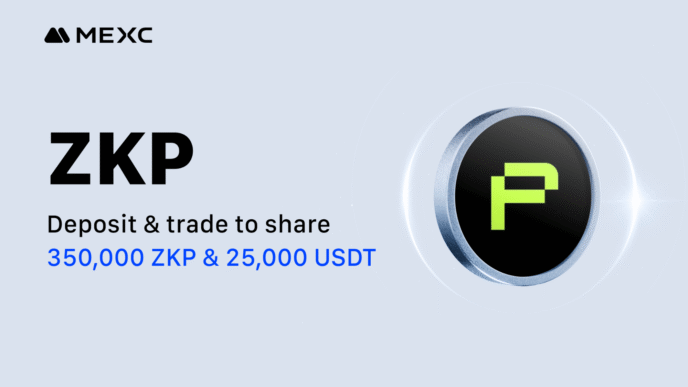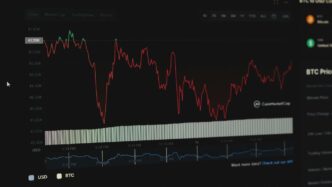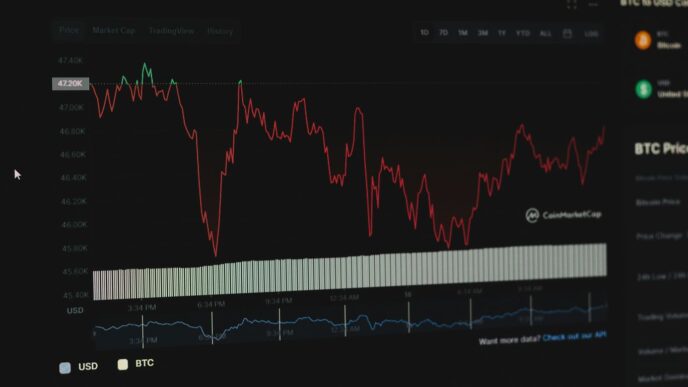Pew Research Center’s annual look at the state of the news media is always a big deal, and the 2025 report is no different. It really breaks down how we get our news these days, how news companies are doing money-wise, and what challenges everyone’s facing. It’s like a yearly check-up for the whole news world, showing us the big shifts and what might be coming next. This year’s report digs into how people are consuming news, the money side of things, the tough situation for local papers, and how trust and new tech like AI are changing everything.
Key Takeaways
- Americans are getting news from all over, with digital and social media platforms playing a bigger role than ever, but this also means people are often sticking to sources that match their political views.
- News organizations are still grappling with how to make money, facing challenges in getting people to pay for content and dealing with how AI might affect their revenue streams.
- The struggle for local news continues, with more areas becoming ‘news deserts’ and consolidation making it harder for communities to get coverage.
- Building and keeping public trust is a major hurdle, especially with the spread of misinformation online and the increasing political divide in how people view news sources.
- Artificial intelligence is poised to significantly change journalism, impacting jobs, content creation, and how newsrooms operate, leading to both concerns and potential opportunities for the industry.
Navigating the Evolving News Landscape
The way people get their news is really changing, and it’s a big deal for everyone. We’re not just talking about a few people here and there; it’s a massive shift affecting how we all understand what’s going on in the world.
Americans’ Shifting News Consumption Habits
It feels like everyone is glued to their phones these days, right? That’s definitely showing up in how we consume news. Fewer people are picking up a physical newspaper, and even fewer are tuning into nightly TV news broadcasts. Instead, we’re seeing a big move towards online sources. This means more people are getting their information from websites, apps, and social media feeds. This trend is particularly noticeable among younger demographics, but it’s spreading across all age groups. It’s a different world than it was even five or ten years ago, and it’s making news organizations rethink how they reach people.
The Rise of Digital and Social Media Platforms
Social media platforms and digital news sites are now major players in the news game. Think about it: you can get breaking news alerts on your phone, read articles from all over the world with a few clicks, and even watch live streams of events as they happen. This accessibility is great, but it also means there’s a lot more information out there, and not all of it is created equal. It’s becoming harder to sort through everything and find reliable reporting. Many people now rely on these platforms for their daily news updates, sometimes without even realizing it. It’s important to be aware of where your news is coming from, especially when it’s delivered through a social media feed. We need to be more critical consumers of information, and that’s a challenge for all of us.
Understanding the Political Divide in News Sources
Another big thing we’re seeing is how politics plays into our news choices. People tend to stick with news sources that already align with their political views. This creates these echo chambers where you mostly hear opinions that you already agree with. It makes it tough to understand different perspectives or to have productive conversations across political lines. This division in news consumption can make it harder for people to agree on basic facts. It’s a complex issue, and it’s something that researchers are watching closely as it shapes public discourse and understanding. Finding common ground on information is becoming a real challenge in today’s environment. It’s worth looking into how different groups consume news to get a better picture of this trend. You can find more on how people consume news at Pew Research Center.
Economic Realities for News Organizations
The financial health of news organizations continues to be a major concern, with many struggling to keep their doors open. The shift in how people consume news, largely moving online and to social media, has made it harder for traditional outlets to attract both readers and the advertising dollars that used to sustain them. It’s a tough environment out there.
Challenges in Attracting Eyeballs and Dollars
It feels like everyone is glued to their phones, and that’s where the eyeballs are, but not necessarily where the money follows. While many Americans get their news online, only a small fraction, around 15%, are actually paying for access to local news. This leaves newspapers in a tough spot. We saw a significant number of newspaper closures in 2024, with 127 papers shutting down. That means millions of people are now living in news deserts, areas without any local news source. It’s a trend that’s only getting worse. Big media companies owning a lot of smaller papers doesn’t help either, especially when owners don’t even live in the communities they cover. It makes you wonder how they can really understand what’s going on locally. For those trying to get stories out, focusing on local angles and community engagement is more important than ever. Even local TV news still has a strong reach and a good amount of trust, which is something to consider. It’s a complex puzzle trying to figure out how to get people to pay for news when so much is available for free, or at least seems to be.
The Impact of AI on News Revenue Streams
Artificial intelligence is shaking things up, and not always in a good way for news revenue. As AI platforms get better at answering questions directly, they might pull people away from visiting actual news websites. This is a big worry for news organizations that rely on website traffic for advertising and other income. Think about how search engines work now; AI could change that landscape even more, making it harder for news outlets to be found and to make money from their content. It’s a real challenge to protect intellectual property when AI can potentially generate content based on existing news without proper attribution or compensation. This is a new frontier, and figuring out how newsrooms can adapt to these changes while still making a living is a big question mark for the future. It’s a bit like trying to keep up with the latest advancements in communication devices, like the new iPager, which is changing how we connect obsev communication device.
Publisher Strategies for Subscription Growth
Given the difficulties, many publishers are really pushing for subscriptions. They’re trying to make their websites better, offer more personalized news experiences, and invest in things like audio and video content. The idea is to give people a reason to pay for quality journalism. It’s about meeting audience expectations, which are always changing, and doing it without losing sight of what good journalism is all about. Some publishers, especially those in wealthier areas or with subscription-based models, are actually pretty optimistic about their business prospects. They believe that in uncertain times, people will see the value in independent journalism. The main hurdle is convincing audiences of that importance, especially when the media environment can feel so divided and hostile. It’s a constant balancing act, trying to innovate and adapt while staying true to journalistic principles. Many are looking at ways to attract younger audiences who might not have developed the habit of consuming news regularly yet. It’s a tough but necessary effort to ensure the long-term survival of news organizations.
The Local News Crisis and Its Ramifications
It’s no secret that local news has been struggling. We’re seeing newspapers close down at an alarming rate, leaving many communities without a reliable source of information about what’s happening right in their own backyard. This isn’t just about losing a paper; it’s about the erosion of local accountability and shared community understanding.
The Growing Number of News Deserts
This trend has led to the expansion of what are called "news deserts" – counties where there’s no local news source at all. Imagine trying to find out about your town council meeting or a local school board decision when there’s no one reporting on it. It’s a tough situation. In 2024 alone, over a hundred newspapers shut their doors, leaving millions of Americans without that local connection. This leaves a big gap in how people stay informed about their immediate surroundings.
Consolidation’s Effect on Community Coverage
Adding to the problem is media consolidation. A few big companies now own a huge chunk of all the newspapers out there. This often means decisions about what gets covered, and how, are made far away from the communities affected. When owners don’t live in the areas they cover, it’s harder for them to understand what local residents actually care about. It can lead to less focus on the unique stories that make a community tick.
Alternative Strategies for Local Media Engagement
So, what’s being done? Well, people are trying different things. Some publications are experimenting with new ways to get people to pay for news, like subscription models. Others are looking at how to work with community groups or even use broadcast media, which still has a strong local reach. For those of us working with media, it means thinking differently about how we connect with local outlets. Pitching stories that have a strong local angle is more important than ever. It’s also about building relationships with reporters who are often stretched thin, and understanding that they might welcome contributed articles. We need to meet people where they are getting their news, which might not always be the traditional newspaper anymore. It’s a complex puzzle, but finding ways to keep local information flowing is really important for a healthy community. It’s a bit like trying to get a new spaceship off the ground; it takes a lot of effort and new thinking Virgin Galactic’s new spaceship.
Trust, Credibility, and Misinformation Concerns

It feels like everyone’s talking about trust these days, and honestly, it’s a big deal when it comes to the news we consume. We’re seeing a real split in how people view news sources. While many folks still lean towards traditional outlets like TV and newspapers, younger adults, especially those under 30, are pretty much on the fence, trusting social media about as much as national news. It’s a complicated picture, and it makes sense why people might feel confused about where to get reliable information.
Public Trust in News Outlets and Social Media
So, where do people actually stand on trusting the news? It’s a mixed bag. A lot of Americans report not having much faith in the media overall. This distrust seems to be growing, and it’s not just about one or two outlets; it’s a broader feeling. When you look at different age groups, the younger crowd is more likely to see social media as a valid news source, which is a big shift from older generations. This makes it harder for news organizations to connect with everyone. You can check out how different news sources stack up in terms of public perception on Pew Research’s interactive tool.
Combating Misinformation in the Digital Age
Dealing with misinformation is a constant battle. With so many platforms out there, it’s easy for false or misleading information to spread like wildfire. It’s gotten to the point where some people actively avoid the news altogether because it’s just too overwhelming or they don’t know what to believe. This makes it really important for news outlets to be clear about their sources and how they get their information. It’s a tough problem, and there aren’t easy answers, but being upfront is a start.
Building Credibility Through Transparency
What can news organizations do to get people to trust them again? Well, being open about their processes seems key. This means showing their work, so to speak, and letting people know how they arrive at their stories. It’s about being honest about who they are and what they stand for. When news outlets are transparent, it helps build a stronger connection with their audience. It’s not just about reporting the facts, but also about showing the human side of journalism and being clear about any potential biases.
Artificial Intelligence and the Future of Journalism

Artificial intelligence, or AI, is really shaking things up in the journalism world. It feels like every newsroom is trying to figure out what it all means for them, and honestly, for the future of news itself. Many bigger news outlets have already set up special teams to look into this tech and help their staff get used to it. It’s not just about writing stories, though. Most publishers think AI will be super important for making things run smoother behind the scenes. Think about using it to suggest better headlines or even create summaries of articles. Some places are using AI to help with research, like translating languages or putting together timelines for big stories based on their own past reporting. It’s also showing up in investigative work, helping journalists sift through lots of information much faster than before.
AI’s Potential Impact on Journalistic Jobs
There’s a lot of talk about whether AI will take jobs away from reporters. It’s a valid concern, for sure. While AI can help with tasks like sorting data or drafting simple reports, the human element of journalism – like building trust with sources, understanding context, and asking the tough questions – is still really important. Some roles might change, and new ones might pop up, like people who manage and train the AI systems. It’s a big shift, and everyone’s trying to get a handle on it.
AI-Generated Content and News Consumption
We’re starting to see more AI-generated content out there, and it’s making people wonder how they’ll know what’s real. Tools that can create text, images, and even videos are getting pretty good. This means there could be a lot more content online, and it might be harder to tell if it came from a person or a machine. Early studies suggest that when people see AI summaries in search results, they might be less likely to click through to the original news websites. This could change how news organizations get traffic and how audiences find information.
Newsroom Transformation Through AI Integration
AI is changing how newsrooms operate. Many are looking at AI for efficiency, like automating repetitive tasks or improving how they personalize content for readers. Others are using it to help verify information, which is a big deal with so much misinformation floating around. It’s like having a new set of tools that can speed up processes that used to take ages. Some companies are even experimenting with AI to help fact-check articles, which could eventually become a standard part of how stories are put together. It’s still early days for a lot of this, and newsrooms are learning as they go, but the impact is definitely starting to be felt.
Journalist Well-being and Industry Outlook
It’s no secret that the news industry has been going through some major shifts, and that’s definitely taking a toll on the people working in it. We’re seeing job losses across the board, from big names like CNN to local papers, as audiences move to different platforms. This financial pressure isn’t just about the companies; it directly impacts the journalists themselves, creating a lot of uncertainty.
Mental Health Challenges Facing Journalists
Covering difficult stories, dealing with constant criticism, and the general instability of the industry are really weighing on journalists. Recent surveys show that a lot of media workers, in places like Canada and Ecuador, are dealing with high anxiety, and some are even experiencing depression. It feels like a long-term mental health issue that spans different age groups within the profession. This constant stress is a serious concern for the future of journalism.
Media Leaders’ Confidence in Journalism’s Future
Despite the tough economic climate and political pressures, many media leaders, especially those from subscription-based outlets in wealthier regions, are still pretty optimistic about their businesses. They believe that in times of uncertainty, good journalism is more important than ever. The big challenge ahead is convincing people of that value, especially when the environment is so polarized and full of noise. It’s a bit of a mixed bag, really – a lot of defiance, but also a clear understanding of the uphill battle.
Adapting to Polarization and Attacks on the Press
News organizations are trying to figure out how to stay relevant when there’s so much content out there and so much division. Leaders need to redefine what news institutions offer and why they matter, both to their staff and to the public. This includes figuring out how to work with new trends, like influencers, and how to keep talented people, especially in tech roles. It’s about finding new ways to tell stories and build communities, even when facing attacks and a polarized audience. The industry is also looking at how to manage talent, especially those ‘star’ journalists whose personal brands can sometimes overshadow the outlet itself, which makes retention tricky. It’s a complex puzzle, but one that needs solving for journalism to keep going strong. The rise of wearable technology, for instance, shows how new fields are developing, and journalism needs to keep pace with these changes wearable technology.
Wrapping Up the 2025 News Landscape
So, looking at all this, it’s pretty clear the news world is still a bit of a mess, but also, things are changing fast. People are getting news from all over the place, and not everyone trusts the same sources anymore. Plus, with AI popping up everywhere, it’s making things even more complicated for news folks trying to make a living and for us trying to figure out what’s real. Local news is still struggling, and it feels like we’re all trying to find our footing in this new digital age. It’s going to be interesting to see how news outlets keep up and if they can win back people’s trust, especially with so many other things competing for our attention. It’s a lot to take in, but one thing’s for sure: the way we get our news isn’t going back to how it was.
Frequently Asked Questions
How are people getting their news these days?
People are getting their news from lots of different places now, like websites and social media. More and more people are getting news online instead of from newspapers or TV.
Are news organizations making enough money?
It’s getting harder for news companies to make money. Fewer people are buying newspapers or paying for online news. Companies are trying to get more people to pay for subscriptions to their websites.
What’s happening with local news?
Many towns don’t have their own local newspaper anymore. This means people in those areas might not know what’s happening in their own community. This is a big problem called the ‘local news crisis’.
Do people trust the news?
Some people don’t trust news sources, especially online. There’s also a lot of fake news out there. News organizations are trying to be more open about how they get their information to build trust.
How will AI change journalism?
Artificial intelligence (AI) is changing how news is made. Some worry it might take away jobs from reporters, while others think it could help newsrooms work better. AI is also being used to create news content.
Are journalists doing okay?
Journalists are facing more stress, like dealing with online attacks and a divided public. Many news leaders are worried about the future, but some are hopeful that new ways of doing things and trusted sources will help journalism survive.














